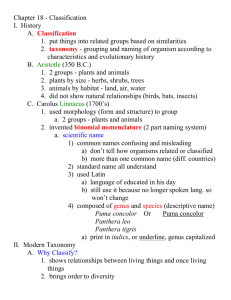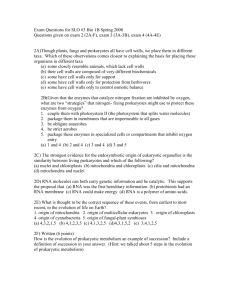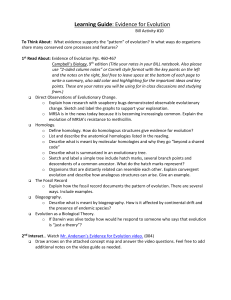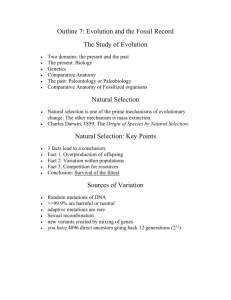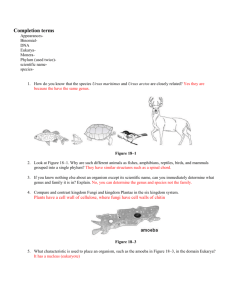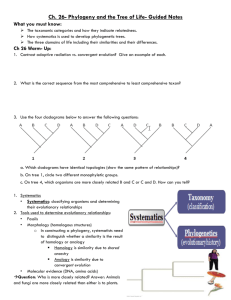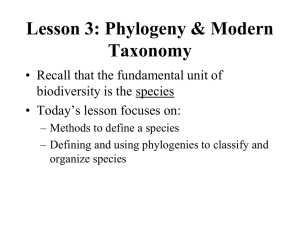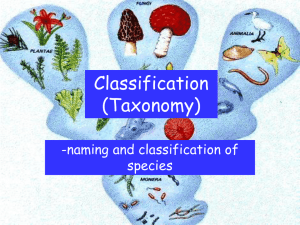6 kingdom notes
advertisement
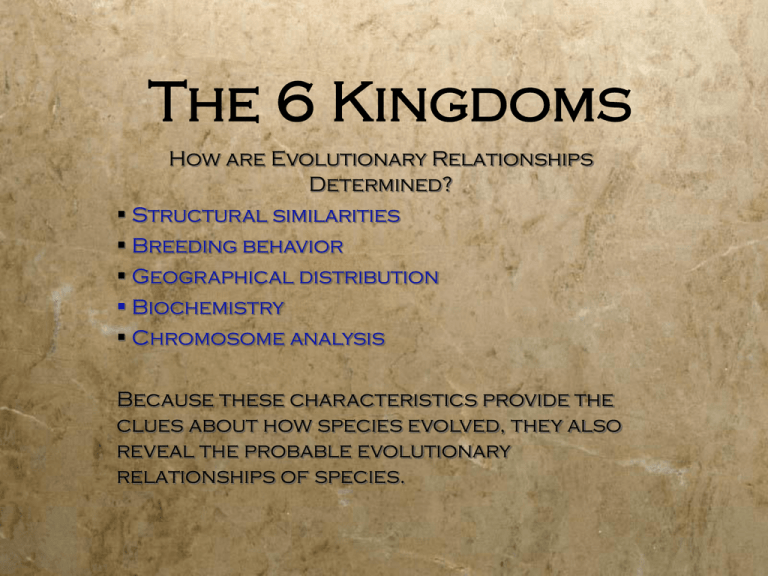
The 6 Kingdoms How are Evolutionary Relationships Determined? Structural similarities Breeding behavior Geographical distribution Biochemistry Chromosome analysis Because these characteristics provide the clues about how species evolved, they also reveal the probable evolutionary relationships of species. Phylogenetic Classification: Models Species that share a common ancestor also share an evolutionary history. The evolutionary history of a species is its phylogeny. A classification system that shows the evolutionary history of species is a phylogenetic classification and reveals the evolutionary relationships of species. Types of models for phylogeny 1. Cladistics - scientists use a model called a cladogram to show derived traits of organisms 2. Fanlike model - may reveal the time organisms became extinct or the relative number of species in a group. May incorporate fossil records. The 6 Kingdoms • Archeabacteria - - prokaryotes, organisms that lack distinct nuclei bounded by a membrane, are microscopic and unicellular. Live in extreme environments, most of which are oxygen free Contain cell walls • Eubacteria - Prokaryotes like the archaebacteria - more than 10,000 species - very strong cell walls - live in most habitats - most are harmless, and some are even helpful • Protists - Most diverse kingdom - “the junk drawer” kingdom - eukaryote that lacks complex organ systems and lives in moist environments - Fossils exist from two billion years ago - some are single celled, while others are multicellular - some are plantlike autotrophs, while others are animal-like heterotrophs, and others are fungus like heterotrophs - some contain cell walls • Fungi - Eukaryotic - either multicellular or unicellular that absorbs nutrients from organic matter - heterotrophs that do not move from place to place - first fossil records are about 400 million years old - there are more than 100,000 species of fungus - contain cell walls made of chitin • Plants - eukaryotes - multicellular - photosynthetic - cells contain chloroplasts and have cell walls made of cellulose - plants contain tissues, organs, and organ systems - the oldest plant fossils are over 400 million years old -there are more than 500,000 species of plants • Animals - eukaryotes - multicellular - heterotrophic - most can move from place to place - contain no cell walls - contain tissues, organs, and complex organ systems - first fossil record showed up 600 million years ago
